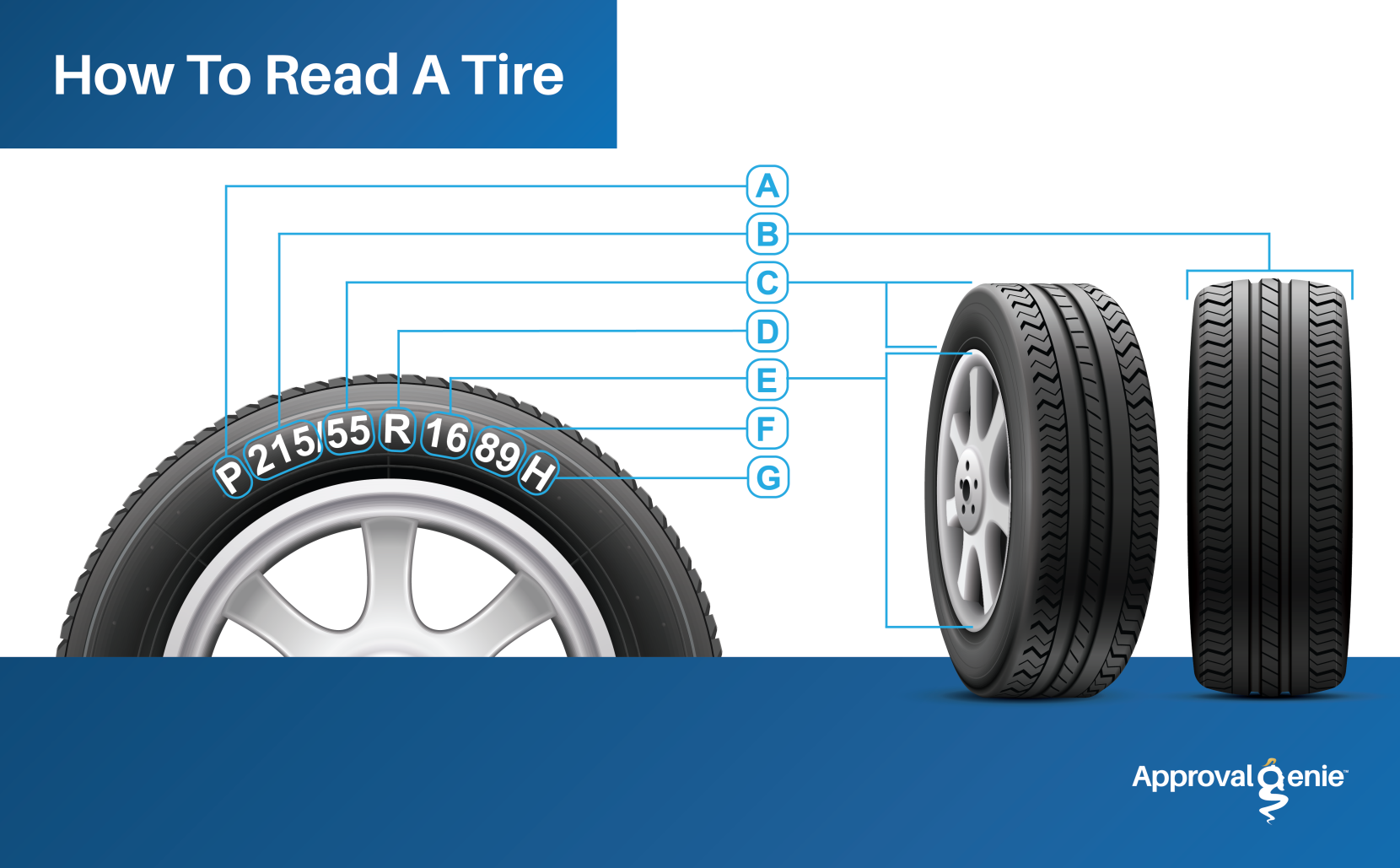
How to Read a Tire
August 21, 2024Choosing the correct tires for your vehicle is crucial for both its performance and safety. In order to make a well-informed decision, it's essential to understand how to interpret tire size when purchasing new tires. This knowledge ensures that you select tires that are not only compatible with your vehicle but also optimized for the specific demands of your driving environment and personal driving preferences.
On the sidewall of every tire, you'll find a series of letters and numbers that are essential for selecting the correct equipment for your vehicle. While these markings serve a crucial purpose, many tires are not accompanied by a guide to interpret them. However, with a basic understanding of these markings, reading a sidewall and identifying a tire becomes a straightforward and simple task.
Here’s how to read tire sidewall:
A - Tire Type
The first letter in the tire code indicates the type of tire:
-
P (Passenger Vehicle Tire): This type of tire is designed for regular cars, SUVs, crossovers, minivans, smaller pickup trucks, and electric vehicles (EVs). If you need a tire for an electric vehicle, look for the letters "EV" on the tire's sidewall, although standard passenger tires often suffice.
-
LT (Light Truck Tire): These tires are built for vehicles that carry heavy loads or tow trailers, such as three-quarter or 1-ton trucks and large SUVs. They are a great choice if you need a durable, heavy-duty tire.
-
ST (Special Trailer): These tires are specifically for trailers, including travel trailers, fifth wheels, and boat or utility trailers. They are not meant for driving vehicles, only for trailers that need reliable, sturdy tires.
B - Tire Width
The three numbers after the initial letter in the tire code represent the tire's width. This width is the distance from one side of the tire to the other. For example, if the tire code reads "P225," it means the tire is for a passenger vehicle and is 225 millimeters wide.
C - Aspect Ratio
The number after the slash in the tire code indicates the tire's aspect ratio. This ratio shows how tall the tire's side profile is. It’s calculated by dividing the tire's sidewall height by its width. For instance, if the aspect ratio is 70, the tire's height is 70% of its width.
D - Construction
There are two main types of tire construction you might see on the sidewall:
-
R - Radial: These tires have better road grip, provide a smoother ride, and offer better fuel efficiency or electric range. They are more durable and comfortable compared to older types of tires.
-
D - Diagonal or Bias Ply: These tires have layers arranged in a crisscross pattern and are often referred to as bias, conventional, x-ply, or cross-ply tires. They are still used in some motorcycle and trailer tires.
E - Rim Diameter
The next number indicates the wheel's diameter, which is the measurement across the inside of the tire where it fits snugly onto the wheel.
F - Load Index
The load index indicates how much weight a tire can carry when it is properly inflated. It’s called an "index" because the number itself doesn't directly show the weight in pounds. Instead, it refers to a chart that lists the exact weight capacity. These numbers range from 1 to 150, with each number corresponding to a specific weight capacity, from 99 pounds up to 7,385 pounds.
G - Speed Rating
The speed rating is the last letter in a tire size sequence and tells you the maximum speed a tire can handle safely. Tires with higher speed ratings generally perform better in terms of handling. However, this is not the suggested driving speed, but the maximum the tire can safely manage. You should always adhere to the legal speed limits when driving.
By grasping these basics, you'll be better equipped to choose tires that suit you best, making your driving experience smoother and safer. Next time you're shopping for tires, use this knowledge to make the best choice for your car.
JOIN THOUSANDS OF OTHER HAPPY CANADIANS
